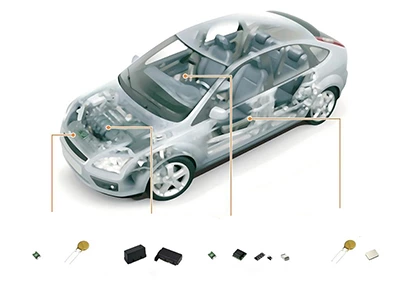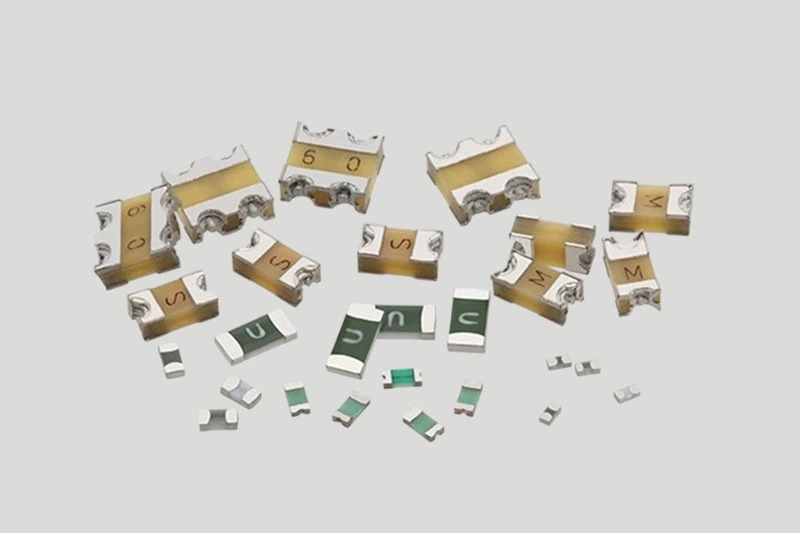Circuit Protection Devices Used In Automotive Electronics
Modern vehicles depend on sophisticated electronic systems that control everything from power distribution and engine management to infotainment and driver assistance. As automotive electronics grow in complexity, circuit protection devices become essential for ensuring reliability, safety, and compliance with strict automotive standards.

1. Why Circuit Protection Matters in Automotive Systems
In automotive environments, electronic circuits are exposed to:
- Voltage surges from load dumps or inductive switching
- Electrostatic discharge (ESD) from human contact or assembly
- Overcurrent conditions due to short circuits or component failure
- Reverse polarity and transient disturbances from the power system
Without proper protection, these electrical stresses can lead to malfunctions, degraded performance, or even complete system failure. Circuit protection devices safeguard both the electronics and the vehicle’s occupants.
2. Common Types of Circuit Protection Devices in Vehicles
(1) Automotive Fuses
Fuses are the first line of defense against overcurrent. When current exceeds a rated limit, the fuse element melts, breaking the circuit and preventing wire damage or fire.
- Blade fuses – standard in vehicle fuse boxes
- Mini/Micro fuses – for compact and high-density wiring harnesses
- Chip/SMD fuses – used in ECUs, sensors, and infotainment systems
Typical use: Power distribution, lighting systems, battery connections
(2) Resettable Fuses (PTC Thermistors)
Unlike conventional fuses, resettable PTC fuses automatically recover after a fault is removed. When an overcurrent occurs, their resistance increases sharply, limiting the current flow. Typical use: USB ports, infotainment systems, communication circuits, and low-voltage control modules.
(3) Transient Voltage Suppressor (TVS) Diodes
TVS diodes react within nanoseconds to absorb high-voltage spikes caused by inductive loads or lightning surges.
- Unidirectional TVS protects DC power lines.
- Bidirectional TVS protects signal lines such as CAN, LIN, and FlexRay.
Typical use: ECUs, ADAS systems, powertrain control, and OBD interfaces.
(4) ESD Protection Devices
Electrostatic discharge (ESD) suppressors protect sensitive ICs and communication ports from electrostatic events during maintenance or user operation. Typical use: Touchscreens, sensors, infotainment ports, and USB connectors.
(5) Varistors (MOVs)
Metal Oxide Varistors (MOVs) clamp voltage transients by changing resistance rapidly at a threshold voltage. Typical use: Power modules, alternators, relays, and actuator circuits.
(6) Diodes for Reverse Polarity and Freewheeling Protection
- Reverse polarity protection diodes prevent damage when the battery is connected backward.
- Freewheeling diodes protect switching components (like relays or MOSFETs) from inductive voltage spikes.
Typical use: Motor drives, relays, and solenoid circuits.
(7) Polymer and Ceramic Surge Protectors
Newer technologies, such as polymer ESD suppressors and ceramic varistors, provide compact, surface-mount protection with higher reliability and longer lifespan. Typical use: Compact ECUs, camera modules, and high-speed data interfaces.
3. Applications in Automotive Systems
| Vehicle System | Typical Protection Devices | Purpose |
|---|---|---|
| Engine Control Unit (ECU) | TVS diode, fuse, MOV | Prevent voltage surge and short circuit |
| Battery Management System (BMS) | Shunt resistor, TVS, fuse | Protect against overcurrent and load dump |
| Infotainment & Communication | ESD suppressor, PTC, bidirectional TVS | Guard against static discharge and noise |
| Lighting & ADAS Sensors | Fuse, diode, TVS | Protect LEDs and sensor modules |
| Charging System (OBC/DC-DC) | MOV, TVS, Schottky diode | Stabilize high-voltage circuits |
4. Automotive Standards and Reliability Requirements
All automotive protection devices must comply with strict standards such as:
- AEC-Q200: Reliability qualification for passive components
- ISO 7637-2: Electrical disturbance by conduction and coupling
- ISO 16750: Environmental conditions and testing for electrical equipment
Components designed to these standards ensure long-term durability and functional safety even under extreme conditions of temperature, vibration, and voltage stress.
5. Future Trends in Automotive Circuit Protection

As vehicles evolve toward electrification and autonomous driving, protection devices must meet new challenges:
- Higher operating voltages in EVs (400V–800V systems)
- Smaller form factors for compact ECUs
- Integration of smart protection modules with real-time fault monitoring
- Enhanced thermal and surge performance for fast-charging circuits
Manufacturers are increasingly developing hybrid protection solutions—combining fuses, TVS, and sensors—to offer intelligent circuit monitoring and fault diagnostics.
Conclusion
Circuit protection is the foundation of safe and reliable automotive electronics. From traditional fuses to advanced transient suppressors, each protection device plays a unique role in shielding vehicle systems from electrical hazards.
Selecting automotive-grade, AEC-Q certified components ensures not only system longevity but also compliance with global automotive safety standards—making them indispensable in the design of modern, intelligent vehicles.